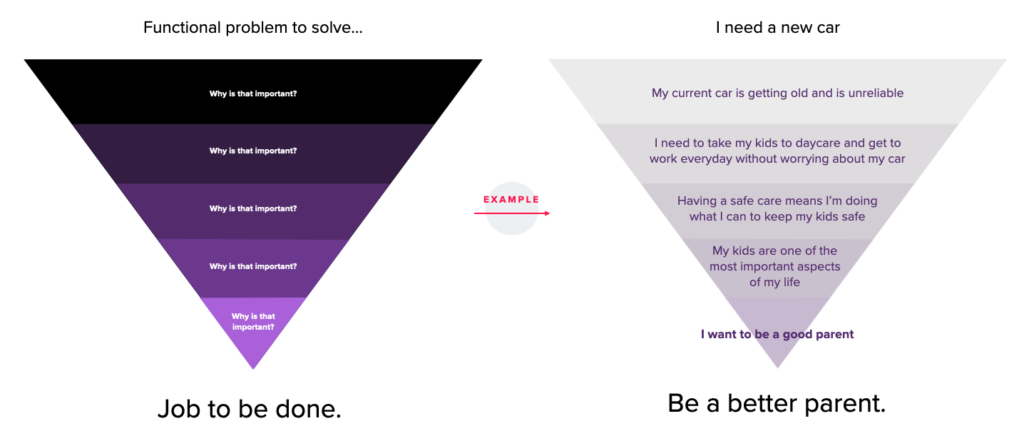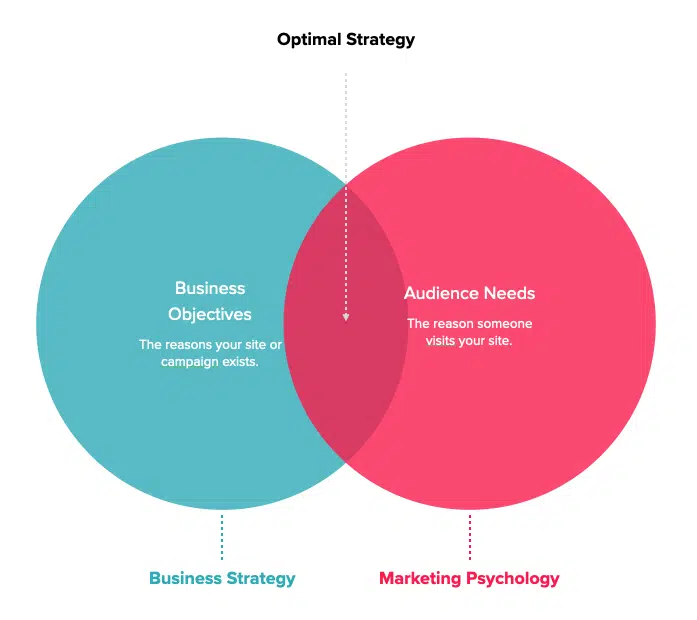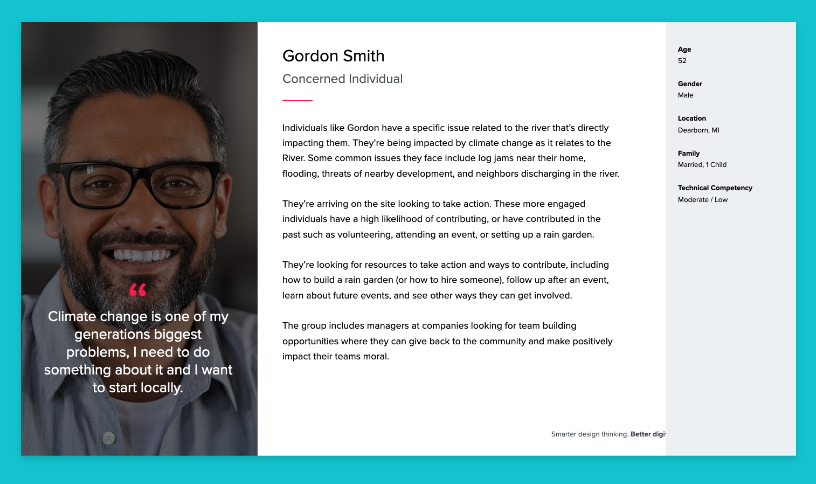Website Redesign Planning Guide

There is no more significant factor in website success than the planning phase. You might be tempted to start planning considering time, budget, and functionality, but doing so is putting the cart in front of the horse. Before you can figure out what you need to spend, how long it will take, and what features the website needs, you first need to decide what success looks like. Surprisingly enough, this critical aspect of planning is the most neglected.
Your plan can only be successful by understanding all involved players, precisely the needs of your stakeholders and target audience. The needs of these two groups should dictate what features are needed, which will inherently inform subsequent budget, timing, and other key considerations.
We’ve established understanding stakeholders and target audiences come first. What is the best way to get started? I recommend looking at stakeholder needs first–let’s dive right in.
Stakeholders and Objectives
There are specific outcomes you expect from your website, whether you’ve identified them or not. Some common examples include acquiring new leads, increasing sales, building awareness, or reducing support overhead. Your website is successful when it fulfills the desired outcomes at an acceptable level. In the industry, we often refer to these as objectives.
Maximizing website success is a product of shaping the entire site around your objectives. Defining objectives and setting specific goals is the most important step in the planning process. I’m reminded of a quote that goes something like this:
You can’t be sure of what direction to take if you’re not sure where you want to end up.
But how might one determine objectives? I’m glad you asked. Objectives come from project stakeholders. Anyone within the organization who has a vested interest in the website is a stakeholder. Stakeholders want the website to perform a function that helps accomplish a specific goal. For example, a Director of Business Development wants the website to generate more leads which would aid his sales goals.
Small projects may have a single stakeholder, like a President or Marketing Director. Larger projects often have several groups of stakeholders, each containing five or more people. A real estate agent might have agents, administrators, and a marketing department.
Once you’ve identified the stakeholders, you can work with them to define their specific objectives.
Defining Objectives
Not all objectives are created equal. You’re looking for objectives that are specific, actionable, and measurable. I often hear “Improve our web presence” or “Showcase our work,” neither of which are specific, actionable, or (quickly) measurable. Better objectives would be “Reach 500 social shares per month” and “Increase web leads by 50%.” You’ll notice both examples get to the root need and provide a specific, measurable goal.

If you’re having trouble extracting root objectives from stakeholders, play the “five whys” game. It goes like this, when a stakeholder responds with a vague objective, ask, “why is that important?” When they respond, ask, “why is that important?” again. Continue doing so until you get to the root need, typically happening in 5 rounds or less.

Let’s use our previous example as a demonstration.
You: What are your objectives for this website?
Them: Improve our web presence
You: Why is that important?
Them: So when people visit our site, we look more credible
You: Why is that important?
Them: So users spend more time on the site and want to contact us
You: Why is that important?
Them: A portion of those users will end up buying something
You: So increasing sales is the objective
Them: Yes. You are brilliant. You deserve a raise.
See how easy that is? And you get a raise out of it!
Once defined, you need to set targets and priorities. Setting goals is just a matter of deciding what’s realistic and then aiming a little higher (we’re overachievers.) Prioritization is more complicated. If you’re dealing with multiple stakeholders, then expect to encounter friction regarding whose objectives are most important. You’ll also run into stakeholders who describe several objectives as equally important. Remind them that if everything is important, nothing is important.
Now that we’ve planned our objectives, it’s time to consider another critical aspect of any website–the target audience.
Loving Your Target Audience
It’s easy to get carried away with what you want when you call the shots. If you make all of your decisions based on what you or your company wants, you’ll find yourself with an ineffective website. Sure. You decide what goes on the website, but users decide whether to stay or return.
Your target audience ultimately dictates the success of your website. If you prioritize your goals over theirs, they’ll leave. They’ll leave if you design a site based on your tastes instead of theirs. If you try and persuade them to consume content that’s important to you but not them, they’ll leave. See a pattern here? Sorry to break it to you…
Your site should align your interests with theirs. We’re talking about real, busy people who have better things to do than spend time on your website. If you help achieve their goals, they might help achieve yours.

So how do you find out what motivates your target audience? Well, the first and most crucial step is knowing who they are. This is a marketing question and could be a series of blog posts, so I’ll assume (and hope!) you’ve got a handle on that. Once you know who you’re trying to talk to, you can talk to them.
Getting into the Mind of Your Audience
Understanding your audience isn’t difficult if you take the time to talk with them. Do you know what doesn’t work well? Speculation. Take the time to reach out to representative audience members–you’ll be amazed at what you uncover with the right questions.
When visiting websites, people trade precious time for desired outcomes (i.e. objectives.) If, at any point, those objectives don’t feel obtainable or the effort required is more significant than their perceived value, the process is abandoned. Therefore, identifying and prioritizing audience objectives is critical.
Once you’ve identified audience objectives, you can focus more on the rest of the user’s journey. In Joshua Porter‘s book Designing for the Social Web, he breaks the typical journey into three facets: goals, activities, and tasks. He writes:
It is helpful to distinguish between goals, activities, and tasks. Goals are end conditions people are striving for. Activities are the set of tasks people do to achieve their goals.
A simple example would be a user looking to hire a home renovation contractor. They might break down as follows:
| Goal | Activities | Tasks |
|---|---|---|
| Hire a home renovation contractor | Get a sense for work quality |
|
| Hire a home renovation contractor | Get a sense of credibility |
|
| Hire a home renovation contractor | Get a sense of credibility |
|
Typically, this breakdown will highlight the alignment between audience and organizational objectives. In this case, you both want the result–a work inquiry. Accomplishing this mutual goal means prioritizing the supporting elements, specifically testimonials, portfolios, processes, credibility indicators, and contact information.
If you focus on organizational goals first and prioritize the latest news, staff bios, and office photos, your audience might get frustrated and leave.

Aim to interview a few people from each core audience group. With each interview, figure out what the interviewee wants from the website and what activities and tasks help them achieve their goals. You’ll end up with a significant list of goals, activities, and tasks. Like stakeholder objectives, you’ll need to rank and prioritize them.
Once complete, you can start defining the project scope.
Defining the Scope
A project scope outlines the specific tangible needs of your new website. It covers everything from functionality and user registration to content, including specific pages. You don’t have to be an expert to write a quality scope. Any qualified design company should assist you in fleshing out the scope. You’re just creating a high-level outline of what you want to accomplish and what supporting elements are required.
The scope should be limited to elements necessary to achieve your defined objectives (audience and organization.) Any content, functionality, or design that doesn’t assist in achieving the objectives unnecessarily increases cost. Each unnecessary element is one more thing to distract your audience, decreasing the effectiveness of your website. Keep your scope simple. This means you’ll need to audit your existing website content.
Falling back on our previous example of the home remodeler, we can look through our objectives, audience goals, activities, and tasks to pull out the functionality necessary for an effective website.
- Functionality
- Contact / request a quote form
- Portfolio manager
- Testimonial manager
- Associations manager
- Content
- Homepage
- Portfolio
- Process
- Contact
(This is a simplified example. Expect to have a significantly more extensive scope.)
Practical Planning: Using Objectives to Build the Project Scope
While there are additional factors to planning your web project, they are all secondary to stakeholder and audience objectives. The best way to succeed is to map out where you want to end up and what’s necessary to get there. This simple process will put you light years ahead of the average website.
Furthermore, taking the time to listen to and understand your audience and their collective objectives will serve as an essential barometer for future discussions regarding design, functionality, content, and promotion.
Check out our website redesign checklist if you’re looking for more resources.